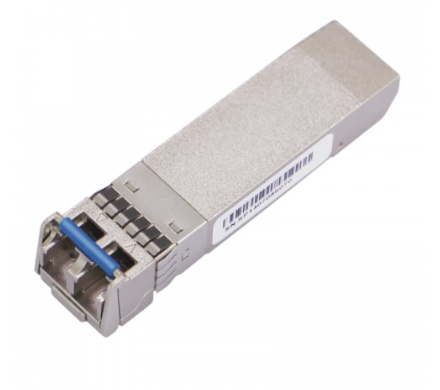- Related articles
- All Cisco WS-G5487’s Information (Overview, Features, Data Sheet PDF, Price, Specification
- Applicable to 1000BASE-T Standard optical transceiver models
- All Cisco GLC-FE-100FX's information (List price, Specs, Datasheet PDF, Compatibility matr
- Buying guide :What is transceiver and what does it do?
- Optical Transceivers for Cisco WS-C2960S-48LPS-L Switch
- The Things You Need to Know about 10GBASE-SW Ethernet Standards
- All Cisco SFP-10GE-SR's information (List price, Specs, Datasheet PDF, Compatibility matri
- Name Brands vs Third-Party Transceivers: Which Do You Prefer?
- All Cisco DWDM-XENPAK-58.17's information (List price, Specs, Datasheet PDF, Compatibility
- The Things You Need to Know about 10GBASE-R Ethernet Standards

Definition:
The enhanced small form-factor pluggable (SFP+) is an enhanced version of the SFP that supports data rates up to 16 Gbit/s. The SFP+ specification was first published on May 9, 2006, and version 4.1 published on July 6, 2009. SFP+ supports 8 Gbit/s Fibre Channel, 10 Gigabit Ethernet and Optical Transport Network standard OTU2. It is a popular industry format supported by many network component vendors.
The 10-Gigabit Ethernet X2 transceiver module is a hot-swappable I/O device that plugs into 10-Gigabit Ethernet ports. Figure 1 shows an X2 transceiver module with the major features identified. The X2 transceiver module connects the electrical circuitry of the system with the optical or copper network.
Difference between SFP+ and X2
SFP+ 10G
- 8GFC and 10Gbit/s 8.5G data rate
- SFP+ MSA Compliant
- Very low power consumption (<1W)
- With digital diagnostic monitor interface
- Operating temperature range 0 to 70 degrees Celsius
- 10G serial Electrical I/F
X2 10G
- Compatible with SENPAK MSA Rev 3.0
- Support of IEEE 802.3ae 10GBASE-L
- XENPAK MSA package with duplex LC connector
- With Digital Diagnostic Monitor Interface
- Operating temperature range 0 to 70 degrees Celsius
- Hot Pluggable 70-PIN Connector with XAUI Electrical Interface
Difference Between X2-10GB-SR and SFP-10G-SR
The enhanced small form-factor pluggable (SFP+) is an enhanced version of the SFP that supports data rates up to 16 Gbit/s. The SFP+ specification was first published on May 9, 2006, and version 4.1 published on July 6, 2009.
SFP+ supports 8 Gbit/s Fibre Channel, 10 Gigabit Ethernet and Optical Transport Network standard OTU2. It is a popular industry format supported by many network component vendors. Although the SFP+ standard does not include mention of 16G Fibre Channel it can be used at this speed.
Besides the data rate, the big difference between 8G Fibre Channel and 16G Fibre Channel is the encoding method. 64b/66b encoding used for 16G is a more efficient encoding mechanism than 8b/10b used for 8G, and allows for the data rate to double without doubling the line rate. The result is the 14.025 Gbit/s line rate for 16G Fibre Channel.
X2 fiber optic transceiver is the 10G fiber optic transceiver, its development was based on former Xenpak standards, X2 10gb transceiver inner function is nearly similar with Xenpak, and X2 also can use one transceiver to satisfy all 10G Ethernet optical port function. X2 Transceiver is about half size of Xenpak, this enable it suit for solidity installs.
Conclusion:
SFP+ optical transceivers are designed for use in 10-Gigabit Ethernet links up to 10km over Single Mode fiber. They are compliant with SFF-8431, SFF-8432 and IEEE 802.3ae 10GBASE-LR/LW and 10G Fibre Channel 1200-SM-LL-L. Digital diagnostics functions are available via a 2-wire serial interface, as specified in SFF-8472. The FTLX1471D3BCL is a "limiting module", i.e., it employs a limiting receiver.
X2 fiber optic transceiver is the 10G fiber optic transceiver, its development was based on former Xenpak standards, X2 10 GB transceiver inner function is nearly similar with Xenpak, and X2 also can use one transceiver to satisfy all 10G Ethernet optical port function. X2 Transceiver is about half size of Xenpak, this enable it suit for solidity installs.






















































